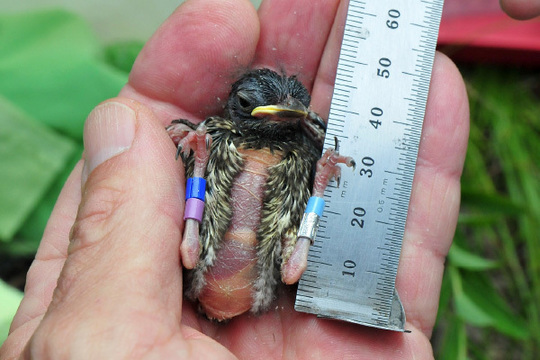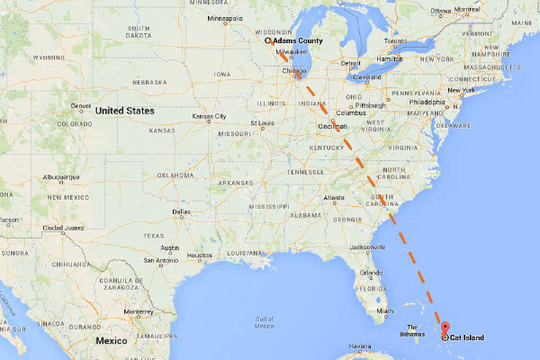A Kirtland's warbler named ABPI was discovered in the Bahamas, carrying with it leg bands from Wisconsin
 Last summer, nestling ABPI received its color-bands at 5-6 days old, Adams County, WI. Photo by Joel Trick.
First, why ABPI?
Not Abpi, but more like A, B, P, I. The bird was named after the color and order of the bands on his legs. Last summer was the first time biologists banded Kirtland's warbler nestlings in northern Wisconsin, and ABPI was one of the six nestlings to be banded. The bands are used to help identify individuals.

A historic discovery
Kirtland warblers are rare. Very rare. But banded Kirtland warblers are even rarer. Out of the estimated 4,000 Kirtland warblers on earth, only a small portion are banded, and of those banded birds only a handful of those are young birds. ABPI was one of only six nestlings banded in Wisconsin and earlier in the week biologists in the Bahamas saw ABPI -- he traveled 1500 miles from where he was hatched in Adams County, WI to wintering grounds on Cat Island in the Bahamas. ABPI was the first Kirtland's warbler to be banded in Wisconsin and observed in the Bahamas.
 A map showing the migration of ABPI from Adams County, WI to Cat Island in the Bahamas.
Learn more about the federally-endangered Kirtland's warbler
Wisconsin DNR Species Guidance Document
DNR News Feature
USFWS -- Wisconsin Kirtland's Warbler Updates
Acknowledgements
Thank you to Ashley Hannah for writing the original field update and for her dedication to Kirtland's warbler conservation, and another big thanks to the Kirtland's wintering grounds research team of Joe Wunderle (US Forest Service), Dave Ewert (The Nature Conservancy), Genie Fleming (Puerto Rican Conservation Foundation), and Nathan Cooper (Smithsonian Migratory Bird Center).
|